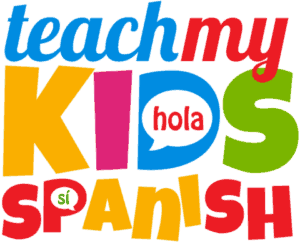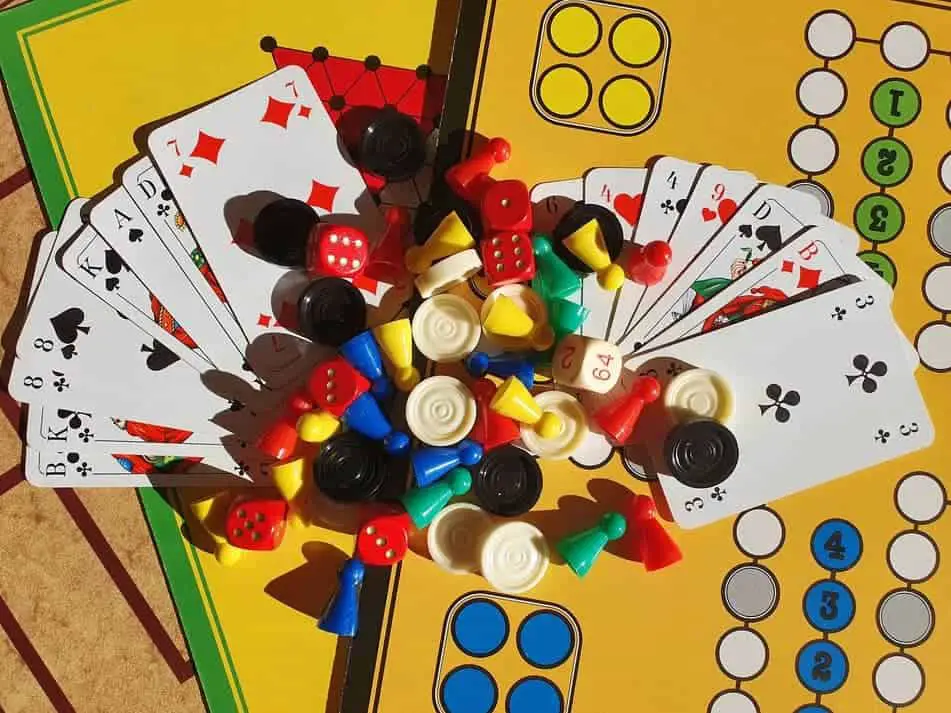
It is scientifically proven that kids can learn multiple languages much easier than adults, but that doesn’t mean the process is always fun for them. Integrating learning games will not only make Spanish education more interactive, but it also increases the likelihood of retention.
Spanish learning games for kids often include board games, card games, trivia games, and more. Sometimes they are a Spanish variation of English games, such as Manzanas con Manzanas (Apples to Apples). Of course, these are just a few of the many options.
Read on for a diverse list of some of the best Spanish learning games for kids. This list describes how the games are played as well as the elements of the Spanish language they will test and practice.
Top Spanish Learning Games for Kids
Sitting at a desk, repeating verb tenses and vocabulary can be extremely boring when learning a new language, especially for kids. These games are guaranteed to help keep kids focused and interested in learning the Spanish language. The list includes a significant variety of game types, so you’ll always have something new and exciting for them to play. Be sure to have prizes, so the kids have that extra incentive to stay focused throughout the game.
Bingo
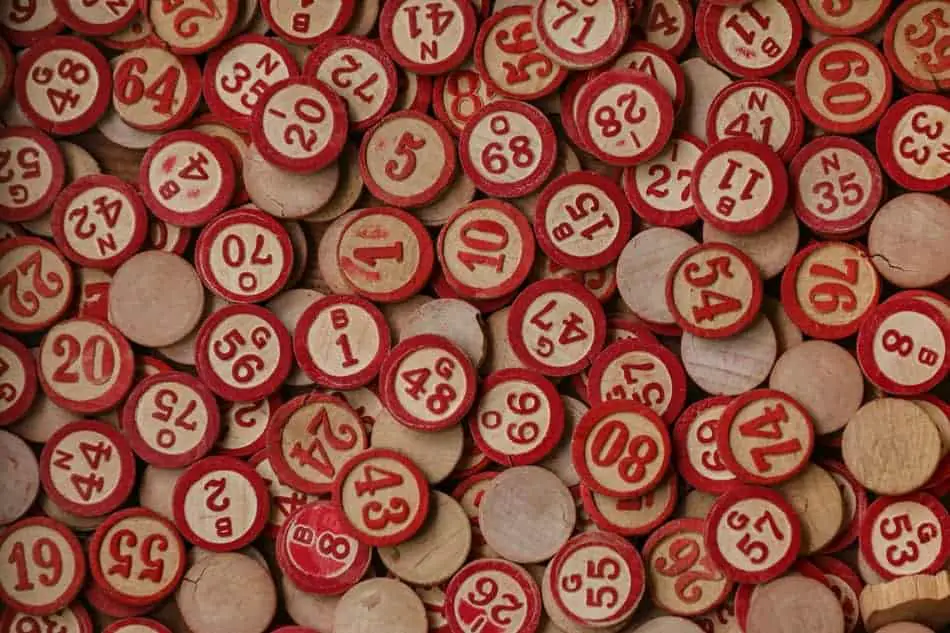
Sometimes the best way to ease kids into the Spanish language is to use a common English game they already recognize. Bingo is an absolute classic and requires very few materials. This game is perfect for practicing vocabulary verbs within a lesson or chapter or practicing verb conjugations.
Necessary Equipment
- Pre-made Bingo board grids or blank paper
- Writing utensils
- List of vocabulary terms or verb conjugations
- Prepared sentences or descriptions to correspond to each conjugation/vocabulary term
How to Play
The rules of Bingo are fairly simple. Either print out as many pre-made Bingo board grids as you need or give your students some blank paper and have them create the grids themselves. Once the grid is made, have your students fill in the empty spaces randomly with the vocabulary terms or verb conjugations on a provided list.
Now the game can begin. The moderator can decide to read off the terms or conjugations, but this isn’t very interactive since the kids merely have to cross off whatever you read. The best approach would be to create Spanish sentences and questions that can only be answered with the right term or conjugation.
Once the kids have come to the proper answer, they can cross off that term or conjugation wherever it may be on their board. If they didn’t write the term at all, they’d have to wait for the next turn.
As the game progresses, kids will continue to cross off terms on their boards, and once one of them has a complete line (either vertically, horizontally, or diagonally), they can call out “Bingo!” to win. Remember to check their board to ensure they have the proper answers crossed off and then reward them with their prize.
Categorias
If you’re looking for a great, fast-paced game, try Categorias. This game really tests how much vocabulary the kids have learned up until this point. This is a timed brainstorming game where the kids have to think of as many terms that will fit into the chosen category as possible. You can either split the kids into groups or allow them to play against each other individually.
Equipment
- A prepared list of categories you want to test
- A whiteboard, chalkboard, or paper for student recording
- Writing utensils
- A timer
How to Play
If you put kids into groups for this game, have them assign one of the members as the scribe to write all of the answers on one consolidated sheet of paper.
Start by displaying the category title somewhere visible to everyone, such as:
- Ropas
- Edificios
- Comidas
Once the category is displayed, set a timer for the amount of time that the kids have to record as many vocabulary terms that fit into the category as possible, you can make the timer as short as one minute or as long as five minutes depending, on the players’ experience level.
Once the time is up, the kids must put down their writing utensils and count how many terms they have. Take turns going to each group and have them read their terms to ensure they match the category. The group that has the most applicable terms wins the round.
For an extra challenge, you can apply Scattergories rules to the game. This means that any shared terms between groups no longer counts towards either groups’ total. So, if two groups wrote the word “Manzana” in the category “frutas,” neither gets the point. This is a great way to force kids to be creative, especially if they are well-practiced in the vocabulary.
Simon Dice
Another Spanish take on a common English game, Simon Dice, or Simon Says, is particularly beneficial when kids are learning directions and commands. All you really need for this game is a “Simon,” a follower, and a decent amount of space.
Equipment
- Can use props if you’d like, but otherwise, this game doesn’t require equipment
How to Play
To play Simon Dice, you’ll need a “Simon,” or moderator, and you’ll need one or several followers. If your group of kids is fairly practiced in the Spanish language, have them take turns being Simon. If they’re not quite at that level, then the most experienced member should give all of the commands.
Have Simon face the follower(s) at a distance and be sure everyone has ample space to perform any tasks the leader commands. Try to practice command sentence structure and vocabulary by giving the followers instructions such as “Simon dice palmaditas en la cabeza” (Simon says pat your head). This command is great for practice if they are currently learning about body parts.
Simon Dice is Also Great for Practicing Directions
A command such as “Simon dice muévete dos pasos hacia la derecha,” (Simon says move two steps to the right) is one example. You could also have the kids use their environment with commands such as “Simon dice pon el libro encima de la mesa,” (Simon says put the book on top of the table).
If the followers are young or new to the Spanish language, you can help them by acting out the command with them, so they learn through action. If the followers are supposed to be practicing what they hopefully know, let them figure out the commands themselves.
You can provide points to the game for added competition. For instance, whichever follower performs the proper command first gets two points. You can also make it an elimination game by eliminating any follower that does something completely wrong from the command.
¿Que es Esto?

What is this? Another great game for kids with an expanding vocabulary, ¿Que es esto? can be played virtually anywhere at any time. Simply grab a leaf off of a tree or a pencil from the table and pose the million-dollar question.
Equipment
- A plethora of nearby objects
- Potentially could use paper and a writing utensil
How to Play
All you have to do to play this game is choose an object, ask ¿Que es esto? and if the student identifies the object correctly in Spanish, they have won.
As previously mentioned, you could play this game at any time in any location. If you are attempting to practice a specific category, provide items that suit the category’s vocabulary terms. If your goal is to see how extensive the kid’s vocabulary has become, take them on a walk and start picking up objects for them to identify.
You could also use this game as a tool to help kids learn new vocabulary words by labeling objects with their Spanish translation using a piece of paper and a writing utensil.
Have the kid read the word aloud in English, then Spanish, and interact with the object to help retention. Alternatively, after the kid has interacted with the object, you could remove it and ask them to identify the object by spelling its Spanish name.
¿Lo Que Falta?
What’s Missing? This game is most suitable for little kids that might be in elementary school or younger. You can alter how challenging the game is depending on their vocabulary level by making the cards and dialogue more intricate and drawing out the game past simple identification.
Equipment
- A series of cards that depict images (either random or categorized)
How to Play
This is another game that could either be played with one kid or a group. Using the illustrated cards, lay a select few of them down in front of the kids so that each card is visible. Let the kids inspect the cards and then instruct them to close their eyes (try to conduct this in as much Spanish as their comprehension can handle).
Once all the kids have closed their eyes, remove one of the illustrated cards from the group. The kids may then open their eyes to the prompt, “What’s missing?” The kids then have to describe which card has been removed from the group.
Try to be as interactive as possible with the game rather than letting them win right away. If they guess the right answer, for example, “Falta la manzana” (the apple is missing), play around with them a bit by responding with “¿te refieres al plátano?” (did you mean the banana?).
This banter can help ensure the kids are certain of what they are referring to and might entice more conversation.
¿Que hay en la bolsa?
Great for testing vocabulary, kids can even play this game alone when they want to study but don’t want the boring repetition of using flashcards. You can also play this game in a group where kids pass the bag around and identify whatever they pull out of the bag.
Equipment
- Cards or pieces of paper with images or illustrations on each
- Any type of bag to hold the cards as long as it is not see-through
How to Play
¿Que hay en la bolsa? (what is in the bag?) is similar to ¿Que es esto?, except you fill a bag with illustrated cards, or even objects, that the kid must pull out of the bag and identify.
If you want to make the game a bit more challenging, place one particular object in the bag and give it to a kid. They can put their hand in the bag and feel the object, but they can’t pull it out or look at it. If they can identify the object in Spanish just from feeling it, they win.
There are two ways to play this game, depending on the group size. You can either let each child identify one object at a time, or you can limit the number of guesses the children can take for each object. If they can’t identify the object after a set number of guesses, then the bag goes to the next kid who gets to try.
El Marcador
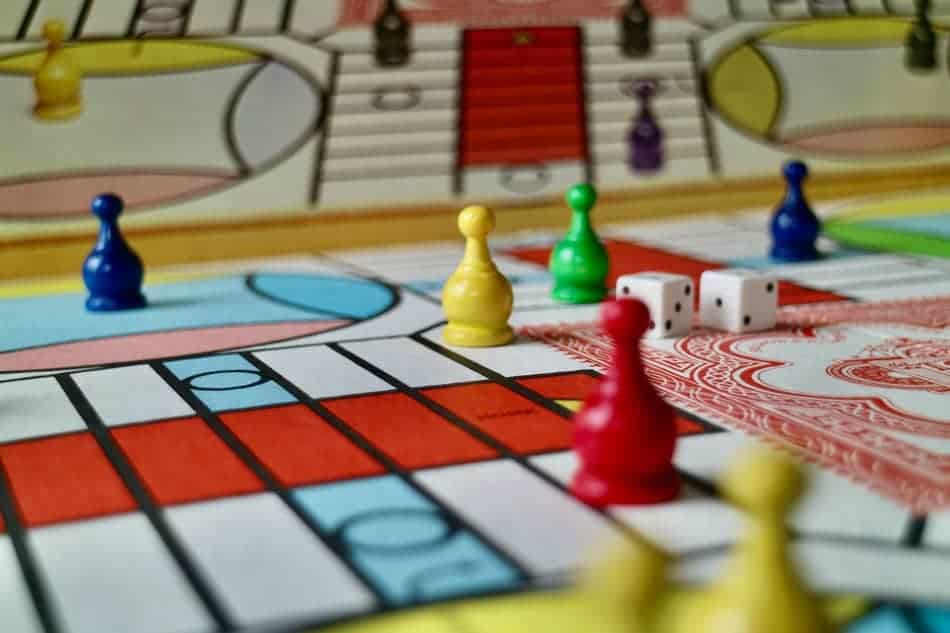
If you want a competitive game between two kids or two groups, try El Marcador (the marker). This is a multipurpose game where you can review a wide range of content from verb conjugations to vocabulary or even determining if a sentence is spoken or written in proper Spanish.
Equipment
- An area for two kids to face-off. Optimally a table with two chairs
- A marker (or any easily grabbed object)
- Whiteboards or paper with writing utensils
How to Play
El Marcador is a true/false game that tests the kids’ knowledge/comprehension as much as their reflexes. First, have two kids sit across from each other and place the marker equidistantly between them on the table. If you are playing in groups, the kids sitting at the table will rotate after each round.
Once the kids facing-off are ready, you will ask a true/false question or make a statement in Spanish. This could be whether or not verb conjugation is correct, the translation of a vocabulary term, or if an entire sentence is spoken properly or has errors. For visual assistance or to practice reading comprehension, write the statement/question on a piece of paper or a whiteboard.
If the statement is true, the kids must race to see who can grab the marker first to get the point. If it is false, they must abstain from touching the marker at all. If one of the children grabs the marker at a false question/statement, they will lose a point. At the end of the game, the kid, or group, with the most points win.
Around the World
Another game for some friendly competition, “Around the World,” keeps kids on their toes as they try to answer enough questions quick enough to beat all the participants and return to their starting point. This will help kids practice vocabulary, conjugations, sentence structure, and more, depending on the questions.
Equipment
- This game is best played with a group of ideally six or more kids, but you won’t need any equipment.
How to Play
This game can be played with kids at their desks (if played in a school), but we recommend placing the players in a circle.
Choose one kid to start the competition and have them stand next to the kid on their left. Once both kids are standing side-by-side (while maintaining the circle’s shape), ask them a response question. These could include:
- Vocabulary definitions
- True/false questions
- Verb conjugations
- Naming something in the room or where it is located (on the table, below the light, etc.)
- Chapter sensitive questions (ex. For the clothing chapter, “What color are Sam’s shoes?” or “What material is Jenny’s shirt?”
There is a wide range of potential questions for this game so be sure to mix things up to keep it interesting.
The kid who answers the question quickest with the correct answer gets to move on to the next challenger, while the player who lost the round sits down and maintains the circle’s shape.
The first child that can make their way around the circle and beat every competitor until they return to their original seat in an undefeated, undisturbed circle wins the game. If a player loses a round and sits down, they have to start over.
Dime Más
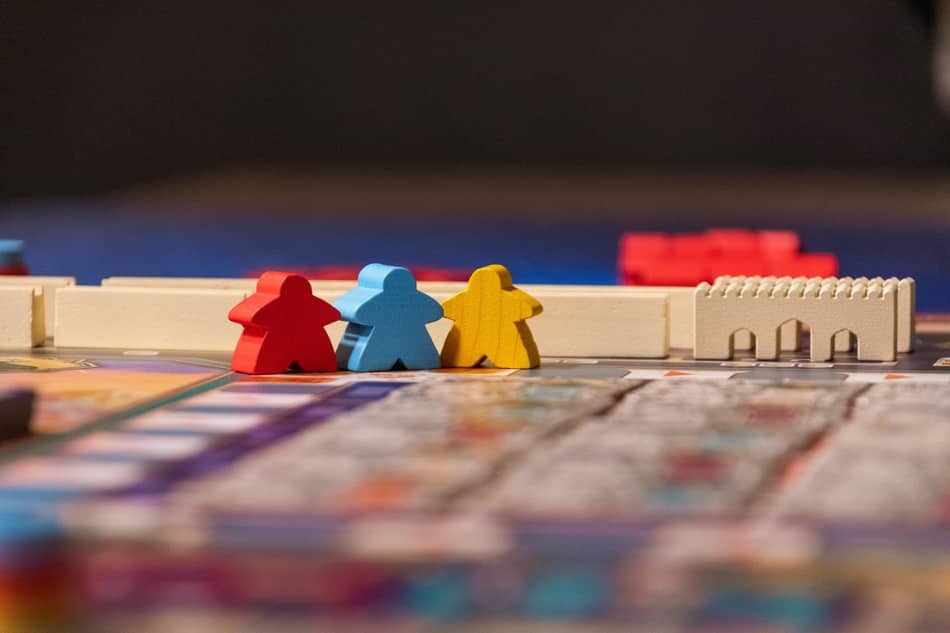
Not only is this a great game to test reading comprehension, verbal skills, and some problem-solving, but it is also a fantastic icebreaker if you are looking for Spanish learning games for a new classroom of kids. Rather than testing their own knowledge for the answer, this game forces kids to interact and converse with each other in Spanish to find the proper match.
Equipment
- Pieces of paper and writing utensils
- Some type of hat or cup to mix the papers in
How to Play
Using pieces of paper, cut them into strips at least 2 inches wide, so kids have enough room to write a sentence or two on them. Have each kid write a unique, interesting fact about themselves on the piece of paper they could expand on. For example, they could write about the fact that they broke their wrist when they were five and would expound upon it by explaining how it happened.
Once everyone has written their fact, place all of the slips of paper in a hat or cup, mix them around, then redistribute the pieces of paper. Make sure none of the kids have their own slips.
Now that everyone has a stranger’s piece of paper, they must search for its owner. Of course, they need to do so only in Spanish. After conversing with others in the room, they will eventually find their slip’s owner, but that’s not the end of the game.
Finding the Owner of the Fact
When the kid finds their slip owner, they must say “Dime más” (tell me more), to which the slip owner needs to briefly expound on their fact with an explanation or separate fact that the seeker can write down or attempt to remember.
After everyone has found their slip’s owner, learned the additional information, and returned to their seat, ask each player:
- What their stranger’s slip said
- Who owned it
- What they learned
This way, not only are they practicing their verbal skills, but others in the room are learning interesting facts about each other.
KLOO’s Learn to Speak Spanish Language Board Game – Race to Madrid
So far, all the other games listed here can be played with common materials in any classroom or household, but maybe you want something a little more time consuming for your kids to make an evening of Spanish practice.
Kloo’s Race to Madrid is an award-winning board game that will test kids’ creativity, vocabulary, and sentence construction. This game is best suited for beginner to intermediate-level players.
Equipment
- Kloo’s Race to Madrid board game
- Paper and a writing utensil for brainstorming
How to Play
Rest assured that when you buy Kloo’s Race to Madrid board game, it will come with instructions, but we’ll describe how the game works for those who are curious.
Each package of Kloo’s Race to Madrid will come with a board game decorated with various classic Spanish cities, such as Barcelona and Valencia, scattered along a path. At the end of the path stands the capital, Madrid.
There are also icons and images along the path that will promote certain actions or questions to allow advancement or send players back several spaces.
In addition to the board, this game also includes a deck of cards, each with its own Spanish term. These terms can range from verbs to nouns to adjectives – basically, the essentials of a relatively simple sentence that even beginners could use.
How You Start the Game Play
Start the game by dealing each player seven cards. The game’s goal is to use these cards to create sentences for points or obtain points through translations. The cards come in different colors, but you must start a sentence with a red card in your hand. If you don’t have one, choose any other color to start.
After placing your sentence starting card down, look at the colored arrows on the card. This indicates which colored card can follow the one that has already been placed down. If the card has a double arrow, you must play an additional card before ending the sentence.
Place your cards so that they form a complete sentence. You will gain points for each card that is placed down as well as each word on the card you can accurately translate.
These points will correlate to steps you can take along the board. However, some spaces you land on might allow you to move forward or force you to move back.
The first player to reach the capital of Madrid wins. You can keep the game short by only requiring one lap around the board before entering Madrid, or you can lengthen it by requiring five or more laps.
You can also make the game more challenging by requiring additional translations when players land on specific spaces. If they translate accurately, the player can remain on the space, but they must move back a few spaces if they are incorrect.
Manzanas con Manzanas
A Spanish version of the English classic, Apples to Apples, this card game is well suited to intermediate to advanced Spanish speakers because it requires a bit more creativity and reasoning skills.
Equipment
- Manzanas con Manzanas game set
How to Play
If you’re familiar with the game, Cards Against Humanity, the premise is fairly similar. You will need a group of ideally 4-5 individuals to play this game. Players will be dealt a hand and take turns being the judge. The judge of the round will choose a manzana verde (green apple) card from the deck, read it aloud, and place it face-up on the table or playing field.
Players must now choose a manzana roja (red apple) card from their hand that they feel best describes the card placed down by the judge. Try to keep the cards anonymous, so the judge picks a card without bias.
Once everyone has submitted their best card, the judge will determine which card from the set is their favorite. The player that submitted the card chosen by the judge will keep this card in the form of a point, and the other cards are discarded.
A fun aspect of this game is getting the chance to test your Spanish persuasion skills if you want to try to convince the judge to choose your card.
Final Thoughts
Learning a new language can be tricky but teaching kids Spanish through games is a great way to make learning interactive, competitive, and enjoyable. These games can spice up any classroom lecture or put an educational twist on family game night. Whether the kids are preschool beginners or intermediate or advanced level middle schoolers, the games on this list can be tailored to various topics and experience levels.
Be sure to keep in mind that while Spanish learning games for kids are great, they won’t replace constructive studies of the language in terms of verb tenses and conjugations, sentence structure, and new vocabulary. While they are great tools for practice, socializing, and motivation, they should be used as tools to supplement learning and spice things up rather than being the sole source of information.
